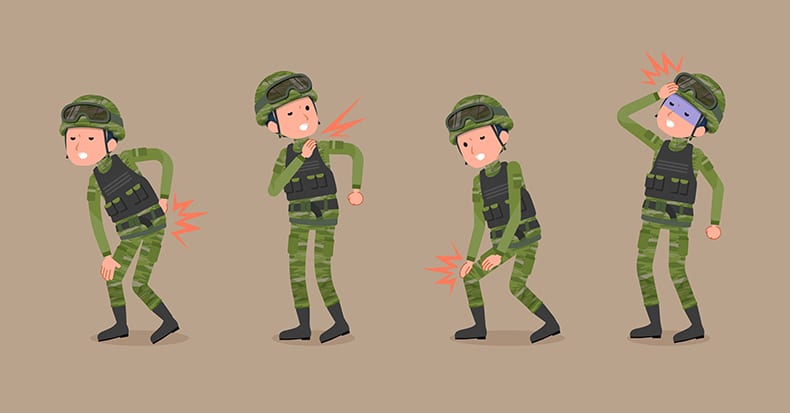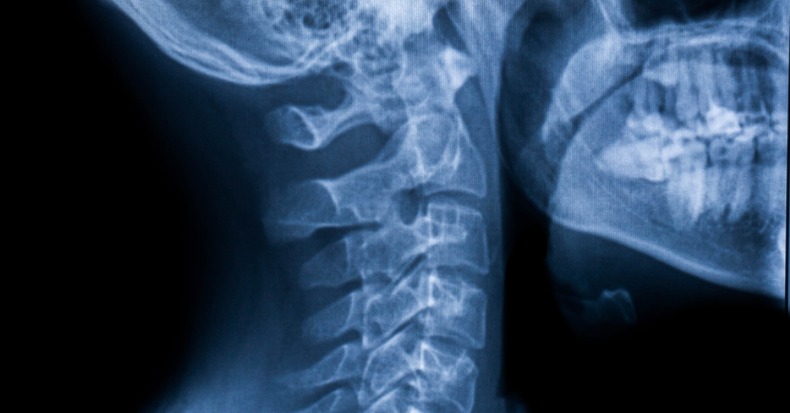Important Numbers Members of our military and military veterans are plagued with musculoskeletal pain problems: 2007 (1) – An analysis of United States Navy Physical Evaluation Board data between February 2005 and February 2006 indicated that musculoskeletal diagnoses were frequent (43%), with back pain (29%) being the most common musculoskeletal diagnosis. 2008 (2) – There […]
Coffee May Benefit Colorectal Cancer Patients
Coffee is one of the most consumed beverages around the globe, and many individuals can’t seem to start their day without a cup or two. Past research has identified several compounds present in coffee that can offer health benefits, and new research suggests that coffee intake can also help patients under treatment for colorectal cancer. […]
Useful Tests for Diagnosing Whiplash
When it comes to whiplash associated disorders (WAD), the process of making an accurate diagnosis and treatment recommendation can vary from healthcare provider to healthcare provider depending on their educational background, ongoing training, and clinical experience. There is also a growing pile of research with respect to WAD that helps refine existing processes and introduce […]
The Neck and Tinnitus Relationship
Experts estimate that approximately 10% of the adult population in the United States experienced an episode of tinnitus—the perception of sound or noise without any external auditory stimulus being present—within the last year. Tinnitus can be caused by wax buildup in the ear, medication side effect, noise-induced hearing lost, ear and sinus infections, cardiovascular disease, […]
Baker’s Cyst and Knee Pain
A Baker’s cyst is a swelling located in the back of the knee that can be either asymptomatic or bothersome, especially when bending the knee. Researchers estimate that up to 94% of popliteal (back of the knee) cysts are associated with an intra-articular disorder, most commonly meniscus (“cartilage”) tears, as well as osteoarthritis, inflammatory arthritis […]
Chiropractic Care for Chronic Carpal Tunnel Syndrome
Because the early symptoms of carpal tunnel syndrome (CTS) can be mild and tolerable, many patients put off seeing a doctor until the pain, numbness, tingling, and weakness in their wrist and hand is no longer bearable. The current research supports chiropractic care as an excellent non-surgical option for new-onset CTS, but what about patients […]
Cauda Equina Syndrome
The cauda equina (Latin for “horse’s tail”) is made up of many nerves that travel down and exit out the sides of the lumbar spine and sacrum (tail bone) and transfer information (motor and sensory) to and from our legs and brain. If the cauda equina becomes compressed, the resulting cauda equina syndrome (CES) is […]
The Lower Back, Leg Pain, and Sciatica
The roots of the sciatic nerve exit the spine through several levels in the lower back, join in the buttock region, and travel down into the lower extremities. When pressure is applied to the sciatic nerve in the lower back area, it can generate pain and other sensations down the nerve into one of the […]
Tools for Managing Carpal Tunnel Syndrome
In addition to manual therapies and specific exercises to relieve pressure along the course of the median nerve as it passes through the wrist and elsewhere, doctors of chiropractic may utilize other high- and low-tech tools to manage the condition: Electric stimulation (e-stim) directs an electric current via electrodes placed on the skin over or […]
Managing Chronic Hamstring Strains
Chronic hamstring strains are more difficult to diagnose because the pain (in the hip region and deep in the buttocks and upper thigh) comes on gradually and is aggravated by repetitive activities like running, rowing, or biking and worsens with prolonged sitting. Hamstring injuries become chronic when a damaged or torn tendon fails to properly […]
- « Previous Page
- 1
- …
- 41
- 42
- 43
- 44
- 45
- …
- 156
- Next Page »










